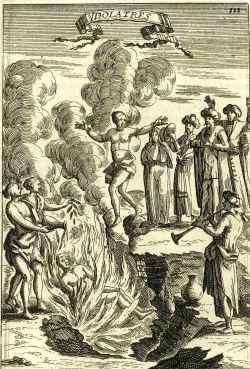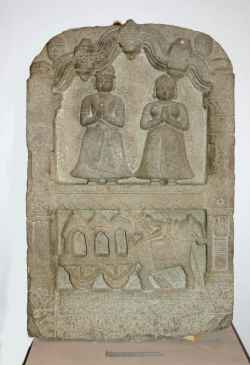La fenomenologia della sati nella Scommessa di Prometeo
in: Le mythe repensé dans l’œuvre de Giacomo Leopard, pp. 327-337http://books.openedition.org/pup/11256
Aix-en-Provence: Presses universitaires de Provence, 2016.
Topics:
2. Sacrifice and religion: Comparisons, Antiquarians, Anthropology (16th-18th Century) 7. Sacrifices of self: Martirology and Catholic global missions (16th-18th Century)
2. Sacrifice and religion: Comparisons, Antiquarians, Anthropology (16th-18th Century) 7. Sacrifices of self: Martirology and Catholic global missions (16th-18th Century)
Edited by: Chiara Petrolini
Related Documents:
Scene of a Sati, with a woman throwing herself into the flames amid a crowd playing trumpets. Above, a winged devil holds the banner with the book's title and the torch with which he lights the ritual fire. (1670)
from: Abraham Rogerius, Le Théâtre de l’idolatrie ou la porte ouverte, Amsterdam, Jean Schipper, 1670, title page
Idolatres (1685)
from: Allain Manesson Mallet, Description de l'Univers, , contenant les differents systêmes du monde, les cartes générals et particulières de la géographie ancienne et modern. Vol.: De l'Asie.
Sati Stone (17th-18th)
from: India
Ferenc Hopp Museum of Asiatic Arts, Budapest
Sati and the Task of the Historian
in: Journal of World History, v. 18 (2007), issue 3: pp.361-368.
The Iconographies of Sati
in: Sati, the Blessing and the Curse: The Burning of Wives in India, pp. 27-49
Oxford: Oxford University Press, 1994.



